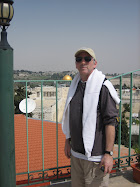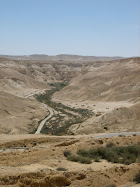Bibliography/Book Review Ramakrishna; Ramakrishna and His Disciples, by Christopher Isherwood; The Gospel of Sri Ramakrishna, by M.
As one may surmise from the listing above, Ramakrishna is not the author, but rather the subject of the two books mentioned. To my knowledge, although books have been written about him, I don’t believe he ever wrote anything. The second book listed above is probably the closest thing to something written by him, as it is a record of what he said by a scribe who was a follower, faithfully writing down on a regular basis verbal discussions and interchanges. I nevertheless thought it best to list this entry under the name of the subject rather than under the names of the authors.
Christopher Isherwood’s book is a wonderful biography that brings to life the incredible nature of the main subject, Ramakrishna, the close circle of followers whom he attracted, and the influence he had on them and on others.
Ramakrishna was an extraordinary being who lived and died in the Bengal province of India, in the vicinity of Calcutta, between 1836 and 1886. He never traveled far, and never left India. He became known to the West through his admirers and disciples, such as F. Max Muller, Romain Rolland, Christopher Isherwood, Swami Vivekananda, Swami Prabhavananda and the organizations they founded, The Vedanta Society, The Ramakrishna-Vivekananda Center, The Advaita Ashrama, The Sri Ramakrishna Math, and maybe others.
The story of Ramakrishna, as documented in these two books and others, is a story of a God-intoxicated being, who never lived anything like a “normal” life, by either Eastern or Western definitions. It has been many years since I read these books, so I am going mostly by memory, which may be more than a bit faulty, with some brief review of the texts as a little refresher.
In his early life, Ramakrishna was immersed in the essence of the path of devotion, known in yoga as “bhakti” whereby he was enthralled with personal representations of the Divine, both male and female, particularly with the Hindu representation of Krishna in male form, and Kali in the female form of the Divine Mother. It is characterized as a path of the heart, as it is emotion-based, although Divine higher emotion, not petty lower emotion. Due to the spiritual culture of his surroundings, he was tolerated by the locals, some considering him an imbalanced madman, although basically harmless, while others had a certain reverence for his total immersion in a ceaseless devotional mode. He therefore was granted enough food and shelter by admirers to maintain physical subsistence while dedicating his life to devotional rituals at various Hindu Temples. The idol images in the Temples where not merely representations of the Divine to him; they were living, animated actualizations of these Divine aspects. He was a lover, a child, a friend, a servant, a devotee of God in both male and female forms. His body and being manifested many symptoms of spiritual/kundalini awakening documented in various yogic texts. He lived many years in this basic spiritual mood. Nothing mattered to him except his intimate relationship with God. He often slipped into an ecstatic state known in yoga as savikalpa samadhi, whereby he was absorbed with one or another form of Divinity as another.
At some point, a wandering monk of one of the orders of Shankara, the great exponent of Advaita Vedanta, “happened” upon the village where Ramakrishna was residing. Advaita Vedanta is a non-dualistic approach maintaining that the true reality is that there is nothing but the impersonal Brahman, the indivisible permanent unity underlying all of creation, and that everything that appears separate from that oneness is impermanent, and as such, is illusion, maya, even all representations of Divinity, no matter how glorious. The path of this approach is known in yoga as “jnana” or “gyana” yoga, the path of discrimination. It is characterized as a path employing the highest aspect of the intellect, the “buddhi”, which provides for the mind to discriminate between the true permanent reality of the absolute, and the “unreality” of the impermanent world of the relative.
Of course, as fate would have it, this wandering monk quickly came upon Ramakrishna and immediately recognized his advanced spiritual state, although founded in bhakti and not in jnana. He offered to train Ramakrishna in Advaita Vedanta, which invitation Ramakrishna accepted. But try as he might to immerse himself into the oneness beyond all duality, Ramakrishna reported to his teacher that he could not get beyond the glory of the internal image of the Divine Mother providing him with infinite, unconditional, boundless, nurturing Divine Love. His teacher persisted, and in the tradition that “the teacher will use force, if necessary”, he took a sharp piece of glass he found nearby and thrust it into the area of Ramakrishna’s forehead corresponding to the third eye above and between the eyebrows, and instructed, rather insistently, to focus on that. All of Ramakrishna’s immense spiritual power of the Divine Heart was thus channeled to the Divine Mind, the entry portal to the realm of non-duality. By virtue of this channeling, Ramakrishna was thrust into the realm of the non-dual, totally merging with the oneness with no sense of separate self remaining, where he sustained this state of motionless nirvikalpa samadhi for three days to the astonishment of his teacher, who eventually was moved to stir him out of that state, lest he die.
Needless to say, the two became fast friends after that. The teacher, by virtue of his vows as a wandering monk, would normally not stay in any one place for more than three days. But he decided to bend the rules a bit, and hung out with Ramakrishna for 11 months, whereby the relationship took a subtle turn, with the roles of teacher and student becoming reversed. Ramakrishna now had come to a full realization of the Impersonal, Permanent, Absolute espoused by Advaita Vedanta. But he had a quarrel with his teacher over the traditional characterization of the world of the personal, impermanent, relative as “mere” illusion hardly worthy of any time or attention, to be scorned. Under Ramakrishna’s gentle tutelage, his teacher finally came to a realization that Divinity also resided within the world of the relative, with its most subtle and powerful representations being that of the various Divine Personages. Upon receiving this realization, Ramakrishna’s teacher left, realizing that he had fulfilled his purpose to both teach and be taught.
After this event, Ramakrishna often greeted newcomers with the following inquiry: “In which form do you prefer to worship God, the Personal or the Impersonal?”. He had now entered a phase in which he was an embodiment of the paradoxical condition of one fully immersed in the realm of the non-dual, while maintaining functionality in the world of duality.
The author, Christopher Isherwood, is responsible for bringing to the West one of the earliest, if not the earliest, translation of the Bhagavad-Gita into English, in collaboration with Swami Prabhavananda, one of Ramakrishna’s close disciples. Although Indian spirituality has a vast wealth of spiritual texts and scriptures, the Gita is considered by many to be the closest thing to a Hindu bible, containing a succinct summary of the broad spectrum of Indian spirituality.
The other book noted above, The Gospel of Sri Ramakrishna, comes in both abridged and unabridged versions. It contains a record of verbal dialogue and teachings of Ramakrishna personally witnessed and recorded by the author. It is a wealth of Indian spirituality, especially Vedanta, and profound universal spiritual teachings uttered from one who many have considered to be an avatar, an incarnation of God on earth.
Both of these books are incredibly enlightening and inspiring. I regard them to be essential reading for anyone with an interest in Indian spirituality. People who have grown up in any of the Bible-related Western traditions often have many issues with the idol-worshipping found in Eastern spirituality as described in these books. I am not here going to discuss these issues, as I have addressed them in another article entitled Idols, Hindu Deities and Yoga. I will point out that some of the spiritual states described by Ramakrishna have correlations in Judaism: Savikalpa Samadhi corresponding to Devekut, and Nirvikalpa Samadhi corresponding to Yichud, which I have described in another article entitled Further Correlations: Yoga and Judaism Levels, Layers, Concepts.



























